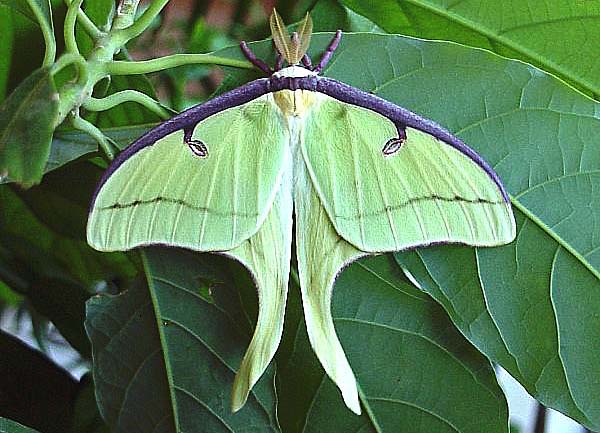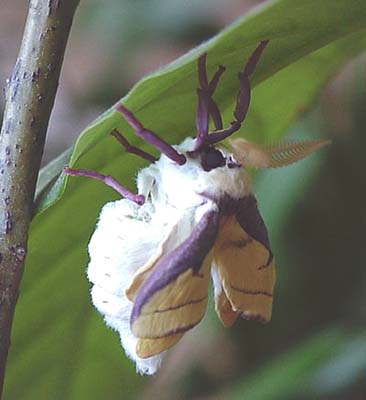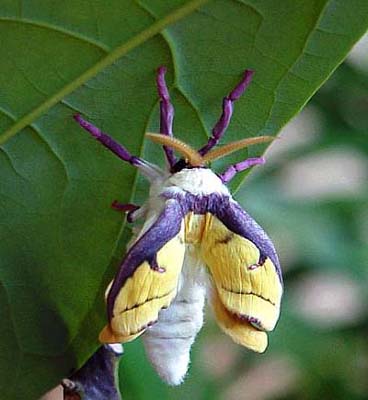
You've got cocoons and are wondering what to do with them now that spring is here. The moths will do most of the work, and you should soon have some beautiful specimens like the luna pictured below. I store my cocoons in tightly lidded (no air holes), plastic, ziploc storage tubs in the refrigerator crisper (approx temp. 36 F.) over the winter.

In the spring I put my cocoons on a couple of layers of dry paper towels on the bottom of a rectangular hardware cloth cage. The cage is about 11 inches wide, 11 inches high, and 18 inches long. The mesh is 1/4 to 3/8 inch.
The actual dimensions of the cage are not terribly important, but it is most important that the moths have some sort of vertical surface that they can climb so that they can hang, either from the sides or top of the cage, to inflate their wings.
This male has been allowed to climb a stem to hang from the underside of a leaf. You do not need to duplicate nature; just provide a suitable alternative.
 |
 |
You could put your cocoons in a glass aquarium or cardboard box and drape some paper towels or regular dish towels over the sides, top to bottom, so that the moths can get a foothold. Keep your emergence (eclosion) container covered to keep moths in and cats and/or rodents out.
If you use a glass aquarium, keep it out of direct sunlight which could cause overheating.
I usually keep my cages in the house to avoid any problems with birds pecking at the moths through the screen.
Here on Prince Edward Island, Canada, I keep my cocoons in tupperware type containers in the refrigerator crisper over the winter. I begin moving cocoons out of cold storage (approx. 36 F) to room temperature (approx. 72 F) in early May so moths will emerge in synchronization with natural flights of wild moths. Natural flight times vary greatly for different areas of the country.
I have observed the following development times (here) once cocoons have been removed from cold storage:
lunas: 14-18 days
cecropias: 18-23 days
columbias: 18-23 days
polyphemus:
23-35 days
cynthias tend to emerge in mid to late July during a heat wave
prometheas and ios tend to be very sporadic throughout the summer
Warmer temperatures tend to hasten development, while cooler temperatures result in a delay.
Times may vary (extend beyond max. indicated) depending upon geography and actual storage temperature. I have had some people tell me that cecropia have taken as long as 35 days.
Cocoons should be exposed to natural light which can have an effect on indicated times. Daylight coming in through house windows is fine.
|

|
or go to Introduction to WORLD'S LARGEST SATURNIIDAE SITE and click on flashing butterfly there. This site features spectacular photography with the most extensive set of Saturniidae files found anywhere on the internet.